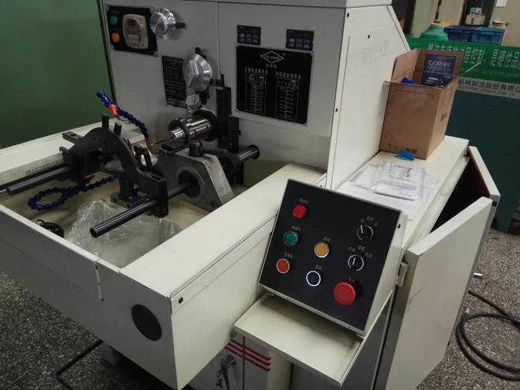How to choose the bond of diamond cut off wheel for glass
3 min read
Choosing the right bond for a diamond cut-off wheel when working with glass is crucial for achieving optimal cutting performance and ensuring the longevity of the tool. The bond, which holds the diamond crystals in place, directly affects the wheel’s ability to efficiently grind and cut through glass. There are several factors to consider when selecting the bond for a diamond cut-off wheel, including the type of glass being worked on, the desired finish, and the operating conditions. Understanding these factors will help you make an informed decision when choosing the bond for your diamond cut-off wheel.
Glass Composition and Bond Selection
When choosing a diamond cut-off wheel for glass, it’s essential to consider the composition of the glass being cut. Different types of glass, such as soda-lime glass, borosilicate glass, and tempered glass, have varying hardness and brittleness. The bond of the diamond cut-off wheel needs to match the specific properties of the glass to ensure efficient cutting and minimal risk of chipping or cracking.
For softer glasses like soda-lime glass, a softer bond is typically preferred to allow the diamonds to penetrate the material more easily without causing excessive damage to the glass. Conversely, harder glasses like tempered glass require a harder bond to effectively grind through the tough surface without premature wear of the diamond crystals.
Additionally, the presence of any additives or coatings on the glass, such as anti-glare or tinted layers, can also influence bond selection. These coatings may require a specialized bond to prevent excessive loading and ensure clean, precise cuts without damaging the surface finish.
Operating Conditions and Bond Toughness
The operating conditions, including the rotational speed of the cut-off wheel and the feed rate, play a significant role in bond selection. Higher rotational speeds and aggressive feed rates require a tougher bond to withstand the increased heat and friction generated during cutting. In contrast, lower operating speeds and lighter feed rates may benefit from a softer bond to allow efficient cutting without excessive friction and heat buildup.
The toughness of the bond also impacts the wheel’s ability to maintain its shape and integrity during prolonged use. A tougher bond is more resistant to wear and is suitable for continuous, high-volume cutting operations. On the other hand, a softer bond may be more susceptible to wear but can provide faster, more aggressive cutting action, making it suitable for intermittent or light-duty cutting applications.
Surface Finish and Bond Hardness
The desired surface finish of the glass after cutting is another important consideration when choosing the bond for a diamond cut-off wheel. A harder bond typically produces a finer surface finish with minimal edge chipping, making it suitable for applications that require precise, polished edges, such as in the manufacture of electronic displays or optical lenses.
Conversely, a softer bond may produce a coarser surface finish but can be more forgiving when cutting thicker or irregularly shaped glass, as it is less prone to causing micro-cracks or edge damage. Understanding the desired finish and edge quality will help in selecting the appropriate bond hardness to achieve the desired results.
Environmental Considerations and Bond Compatibility
Environmental factors, such as the presence of coolant or lubrication during cutting, can also influence bond selection. Wet cutting operations, where water or coolant is used to reduce heat and flush away debris, may benefit from a different bond compared to dry cutting applications. The presence of a coolant can affect the performance of the bond, requiring a formulation that remains stable and effective in wet conditions.
Furthermore, compatibility with the cutting equipment and machinery is essential when selecting the bond for a diamond cut-off wheel. Ensuring that the chosen bond is compatible with the specific cutting machine and spindle speed will prevent issues such as excessive vibration, uneven wear, or premature tool failure.
In conclusion, the selection of the bond for a diamond cut-off wheel when working with glass is a critical decision that can significantly impact cutting performance and the overall quality of the finished product. By considering factors such as glass composition, operating conditions, surface finish requirements, and environmental considerations, you can make an informed choice when selecting the most suitable bond for your specific cutting application. Ultimately, choosing the right bond will maximize cutting efficiency, minimize tool wear, and contribute to achieving clean, precise cuts with minimal edge damage, ensuring the best possible results when working with glass.
.webp)



